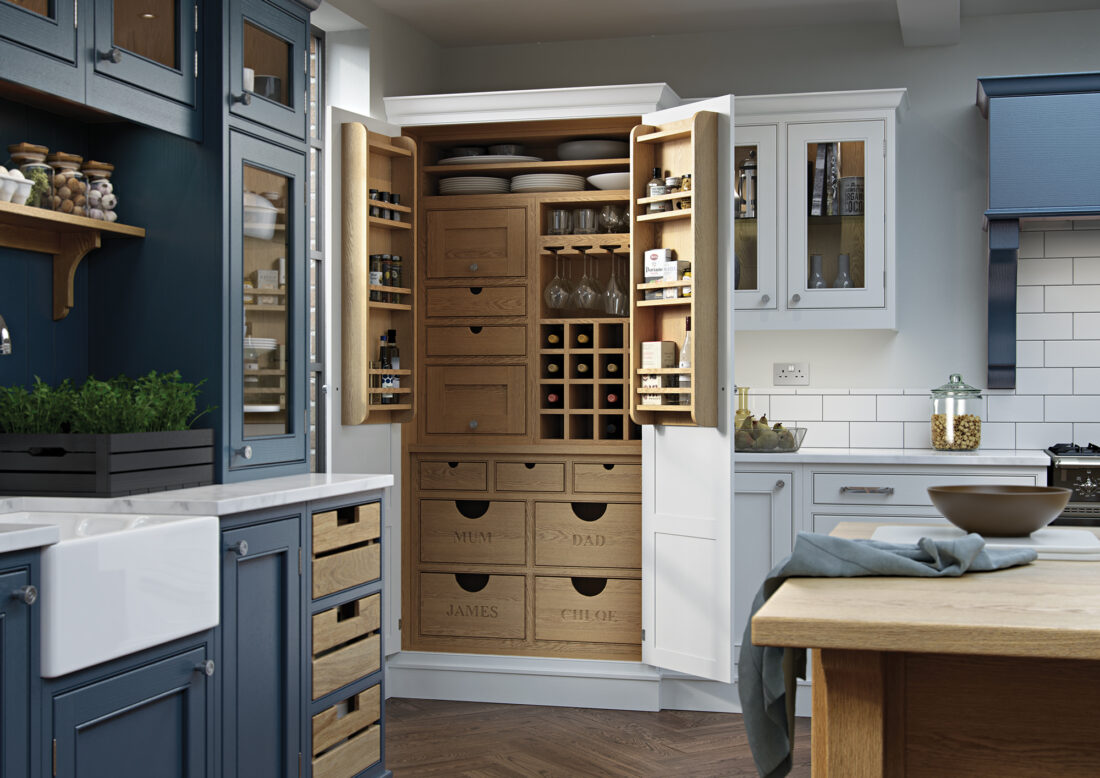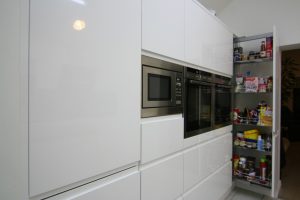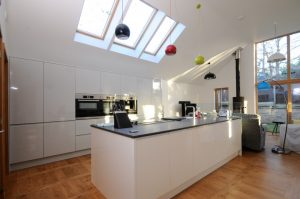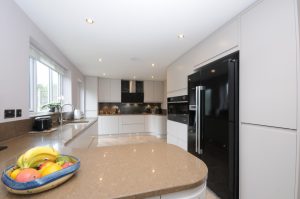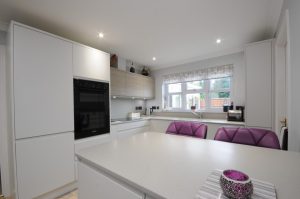The Perfect Larder: A Complete Guide to Kitchen Larder Design and Uses
Once a hidden gem of the traditional kitchen, the larder has made a luxurious comeback ,blending craftsmanship, beauty, and everyday practicality in one irresistible feature. newrooms can design you a bespoke kitchen larder in Cambridgeshire
Whether you’re planning a kitchen renovation or simply looking to maximise your storage, understanding how to design and use a larder effectively can transform your cooking space.
From housing your cooking staples to creating the perfect coffee station, this comprehensive guide explores the different uses of a kitchen larder, helping you make the most of this versatile feature to suit your lifestyle and tastes.
Why is the Larder Such a Sought-After Kitchen Feature
The humble larder is a cupboard with a difference, creating a style statement whilst holding an abundance of practical value. Understanding its appeal can help you decide whether a larder is right for your home.
The term ‘larder’ traditionally referred to a cool, dedicated room for storing meat and perishable foods, whilst ‘pantry‘ is believed to have originated from the French word ‘pan,’ meaning bread.
Today, these terms are often used interchangeably to describe a large kitchen storage cupboard. Thanks to the ‘Downton Abbey’ effect and growing interest in traditional kitchen design, the larder has once again become a highly desirable kitchen feature, as homeowners strive to create an authentic, traditional kitchen that is both practical and aesthetically pleasing at the heart of their homes.
Key Benefits of a Kitchen Larder
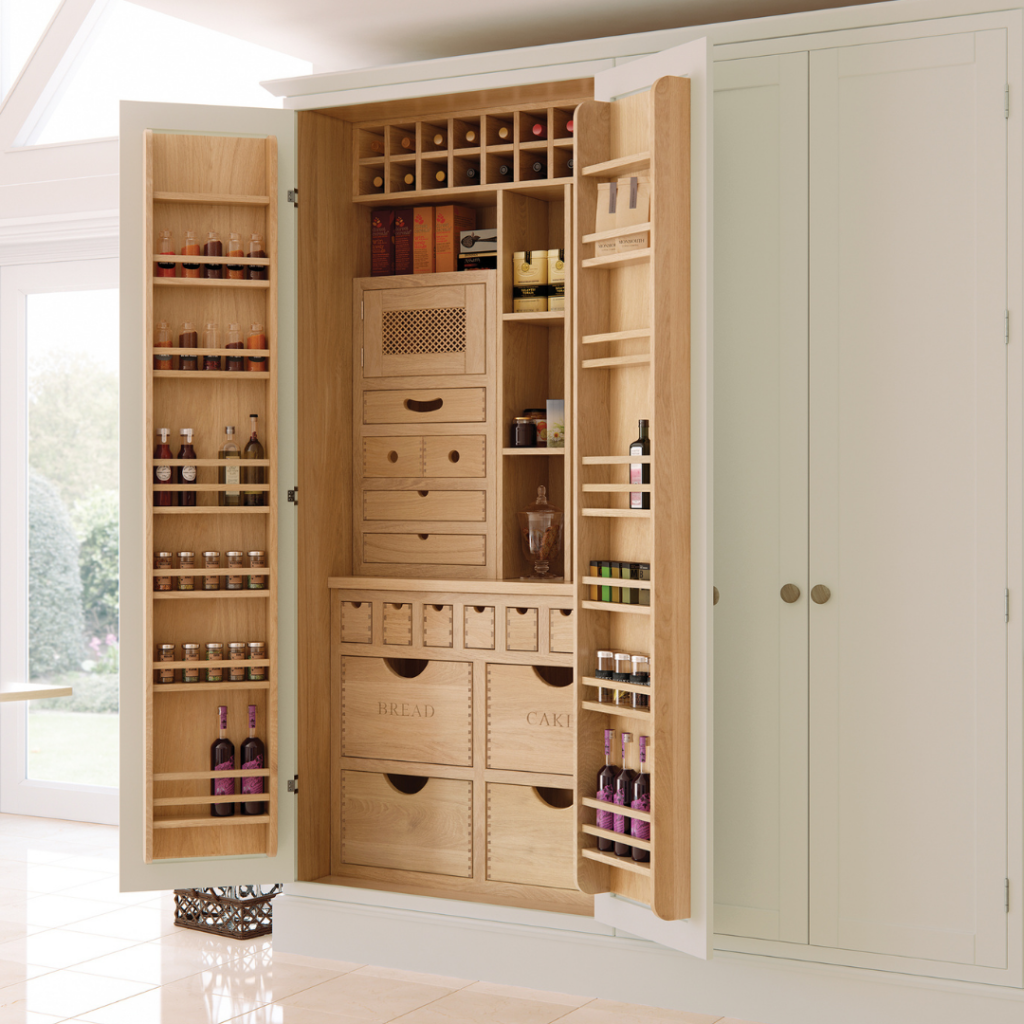
- Increased storage capacity, significantly more space than standard kitchen cupboards
- Reduced worktop clutter, keep appliances and ingredients out of sight
- Better food organisation, see everything at a glance with proper shelving
- Enhanced kitchen aesthetics, adds character and traditional charm
- Improved functionality, can serve multiple purposes, from storage to coffee stations
- Added property value, a desirable feature for potential buyers
With an array of tailoring options available, including combination shelving, dovetail drawers, bi-folding doors, integrated chopping boards and spice racks, it’s easier than ever to design a larder to fit your unique requirements. Creating and integrating your storage solutions strategically can even make your kitchen look and feel bigger.
Different Uses for Your Kitchen Larder
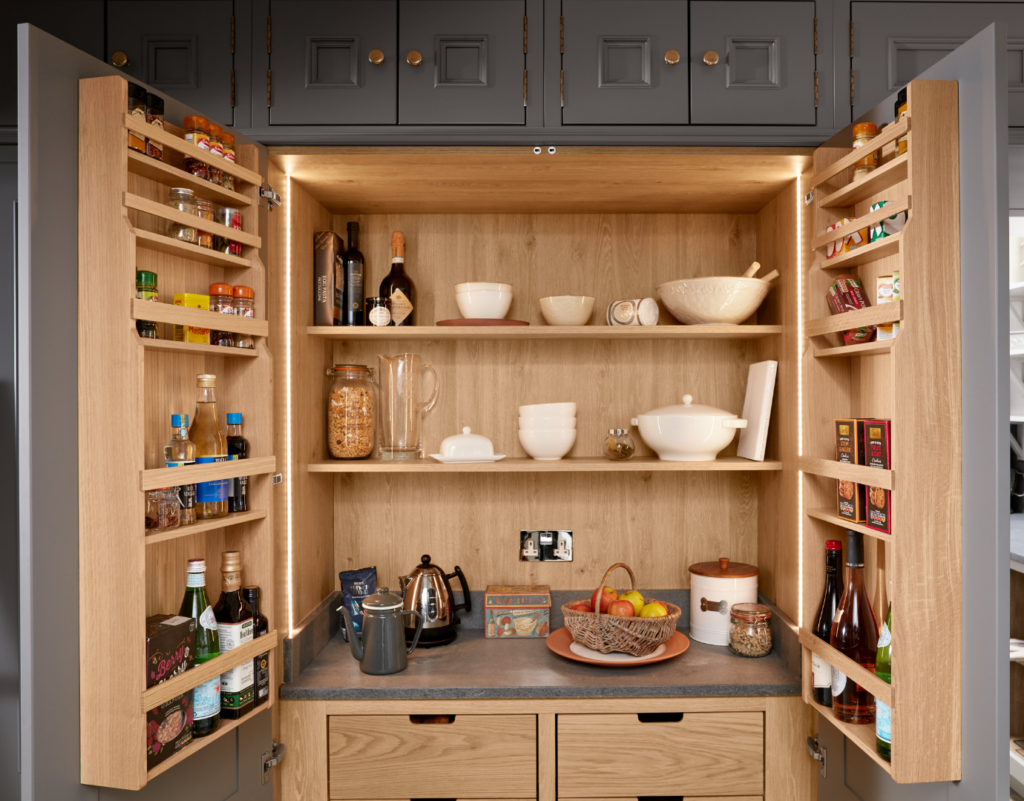
1. Storing Kitchen Staples and Dried Goods
Ample storage is an obvious benefit of a larder, making it the ideal place to store all of your kitchen essentials. A well-organised larder can house dried goods, teas, coffees, eggs, condiments, tins, packets, baking ingredients and everything in between.
With the choice of drawers below, cupboard space above, or a combination of the two, you can design a larder to reflect your storage needs perfectly. If you opt for traditional larder doors, door racks can also be installed to increase storage possibilities further, making use of every available inch.
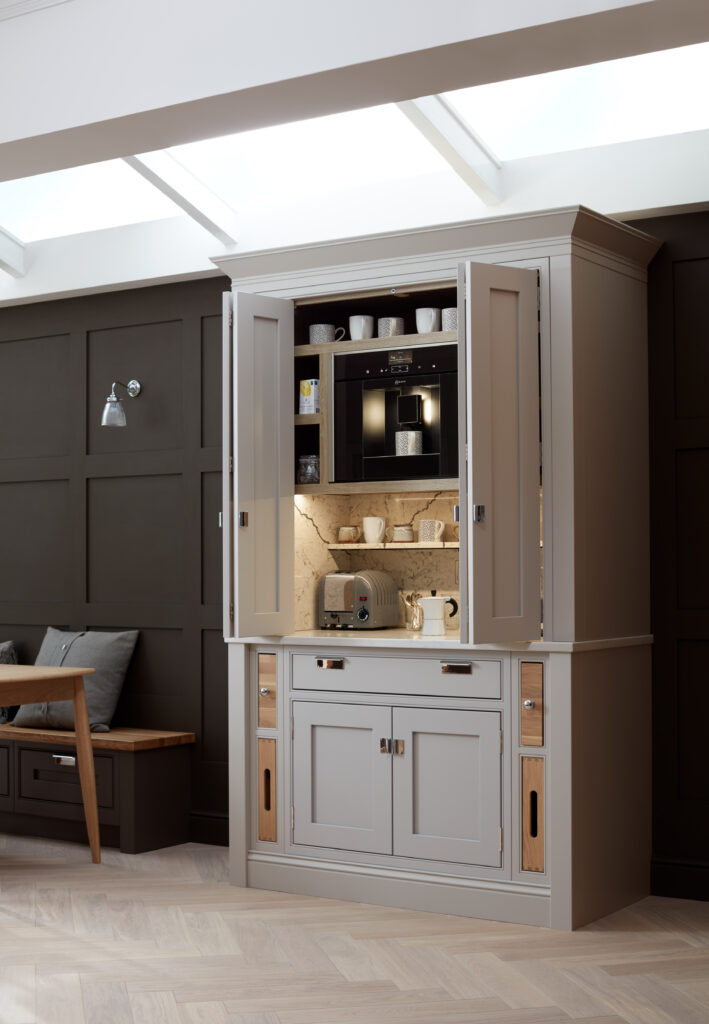
Styling tip: Use a selection of matching glass jars or airtight storage containers to display dried foods like cereal, pasta, rice and baking ingredients. This not only adds to the traditional appearance of your larder but also keeps ingredients fresh and makes it easy to see when supplies are running low.
Organisation ideas:
- Group items by category (baking, breakfast, cooking ingredients)
- Use clear containers with labels for easy identification
- Install pull-out baskets for vegetables and fruits
- Add tiered shelving for better visibility of smaller items
- Reserve lower shelves for heavier items and bulk purchases
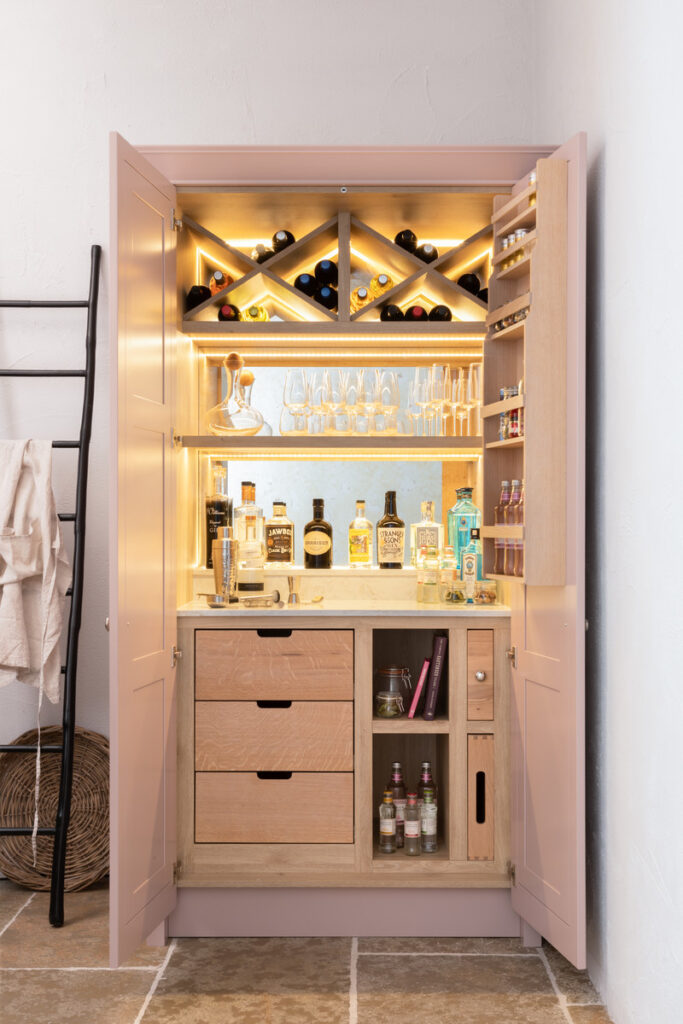
2. Housing Small Appliances and Reducing Worktop Clutter
If you’re looking for a storage solution to help declutter your work surfaces, a larder is the perfect place to house your appliances behind closed doors. Items like toasters, coffee makers, microwaves, kettles, food processors, and mixers can all be neatly stored away yet remain easily accessible.
The internal design of your larder can be tailored to accommodate the electricals you wish to store away neatly. Whether you want to integrate them with dedicated plug sockets permanently, or whether you need shelves at the optimum height to house certain appliances, every detail can be customised to your needs.
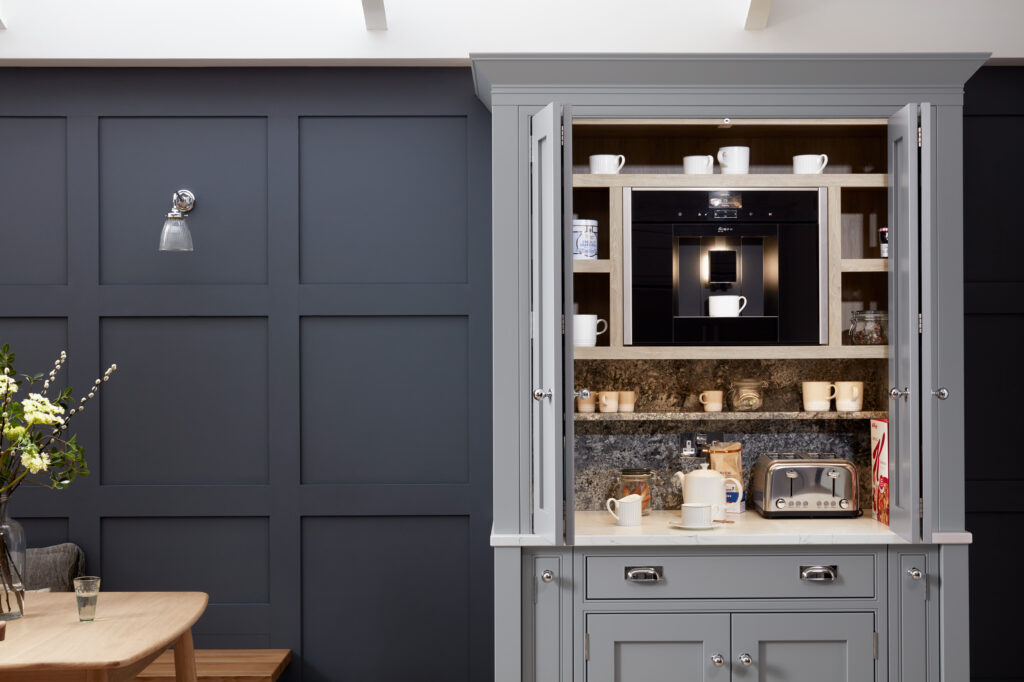
Electrical sockets can be planned into your larder design, so that your appliances can be efficiently used whilst within the larder, without unsightly extension cables and wires trailing across your worktops.
To further minimise clutter on your work surfaces, chopping boards and serving trays can also be integrated into your larder in a clever tuck-away design that adds functionality and an attractive aesthetic element with contrasting wood textures.
Practical considerations:
- Ensure adequate ventilation for heat-generating appliances
- Install sufficient electrical outlets at appropriate heights
- Include a pull-out or fold-down worksurface for appliance use
- Consider lighting inside the larder for better visibility
- Measure appliances carefully to ensure shelves are the right height
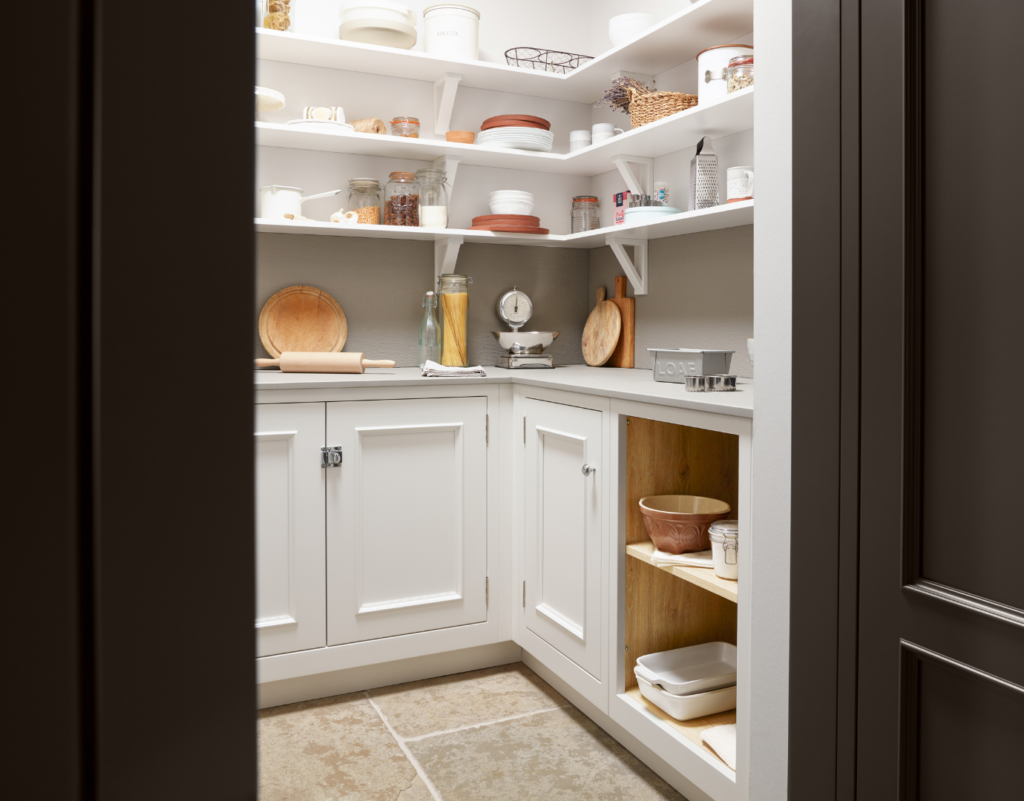
3. Creating a Stylish Drinks Cabinet
If you’re looking to create a striking, glamorous statement with your larder, consider using it as a dedicated drinks cabinet. This is an increasingly popular choice for those who love to entertain.
A drinks larder can include shelves for your glistening wine glasses and cocktail glasses, a worksurface to prepare your drinks, and the option to integrate a natural oak or metal bottle rack into your shelving for wine storage. It’s the perfect choice if your kitchen is the social hub of the house and you enjoy hosting friends and family.
Styling tip: Your drinks cabinet will command attention with eye-catching internal ambient lighting. LED strip lighting or small spotlights can highlight your glassware collection and create an inviting atmosphere.
Design elements to consider:
- Temperature-controlled wine storage options
- Hanging racks for wine glasses
- Drawer space for cocktail tools and accessories
- A small sink or ice bucket integration
- Open shelving to display premium spirits
- A mirrored back panel for added glamour
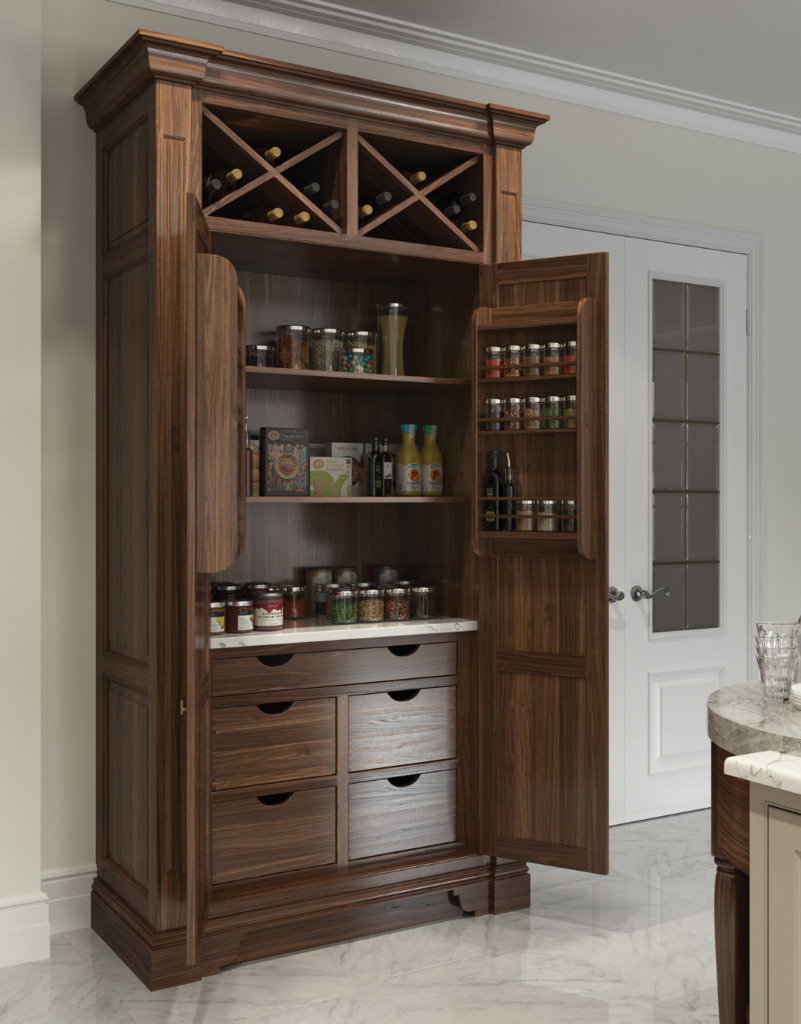
4. A Dedicated Coffee or Breakfast Station
With shelves for your cereal and condiments, the option to integrate a coffee machine, storage for a kettle and toaster, and a worksurface for preparing breakfast, a larder would be the perfect station to dedicate to your first meal of the day.
This setup keeps all your breakfast essentials in one convenient location, streamlining your morning routine and keeping the rest of your kitchen clutter-free.
Alternatively, if coffee is the only thing you reach for in the morning. Why not transform your larder into a sophisticated coffee station, complete with everything you or your guests could ever need to make the perfect cup? Include storage for beans, mugs, filters, syrups and all the coffee-making paraphernalia that can otherwise clutter worktops.
Coffee station essentials:
- Dedicated electrical outlets for coffee machines
- Shelving for mugs and coffee cups
- Drawer space for coffee accessories
- Pull-out shelf for the machine
- Storage for beans, pods, or ground coffee
- Space for milk alternatives, sugar, and sweeteners
5. The Ultimate Baking Station
Last but not least, a larder is the ideal place for a keen baker to store and display their baking essentials. With a worktop to house a stand mixer or food processor, shelves or door racks to display dry baking ingredients in attractive jars, and drawers below to tidy away essential utensils, having everything you could need at your fingertips will make your baking experience smoother and more enjoyable than ever before.
A baking-focused larder keeps flour, sugar, chocolate chips, decorating supplies, and baking tins all organised in one dedicated space, so you can see exactly what you have when inspiration strikes.
Styling tip: Larder shelves are a great place to display your colourful recipe books for all to see, adding personality and making them easily accessible when you need them.
Baking larder organisation:
- Store flour and sugar in large airtight containers
- Use drawer dividers for small items like cookie cutters and piping nozzles
- Install a pull-out shelf for heavy mixers
- Keep baking tins and trays vertical with dividers
- Create a dedicated area for decorating supplies
- Include a fold-down worksurface for extra prep space
Planning Your Larder Design: Key Considerations
When designing your larder, consider these important factors:
Size and Location: Assess the available space in your kitchen. Even a small alcove can be transformed into a useful larder with the right design.
Door Style: Choose between traditional hinged doors, bi-fold doors for wider access, or even pocket doors for space-saving solutions.
Internal Configuration: Decide between fixed shelving, adjustable shelves, drawers, or a combination to suit your storage needs.
Lighting: Good lighting is essential. Consider LED strips, motion-sensor lights, or spotlights to ensure visibility.
Ventilation: If storing appliances or fresh produce, ensure adequate ventilation to prevent moisture and heat buildup.
Accessibility: Think about the height of shelves and whether all family members can reach items comfortably.
Maximising Your Larder’s Potential
To get the most from your kitchen larder:
- Regularly declutter and reorganise to keep it functional
- Use clear storage containers to see contents at a glance
- Label everything for easy identification
- Implement a ‘first in, first out’ system for food items
- Clean shelves regularly to maintain hygiene
- Adjust shelf heights as your needs change
- Make use of vertical space with stacking solutions
Summary
A well-designed larder is more than just additional storage; it’s a versatile kitchen feature that can be tailored to suit your exact needs and lifestyle. Whether you use it for storing kitchen staples, housing appliances, creating a drinks cabinet, or dedicating it to coffee or baking, a larder combines traditional charm with modern functionality.
By carefully planning your larder design and organisation, you can create a feature that not only adds practical value to your kitchen but also becomes a beautiful focal point that enhances your daily routines and entertaining experiences.

